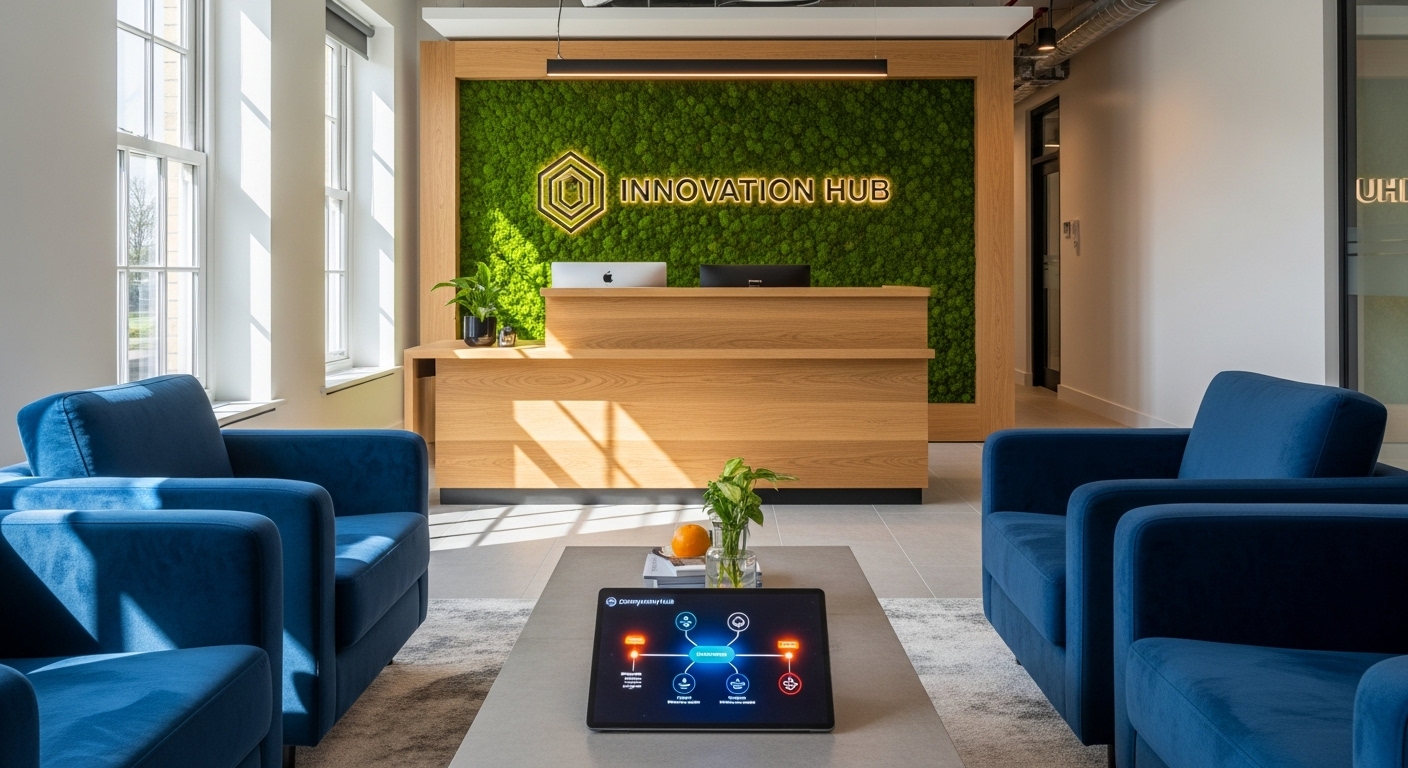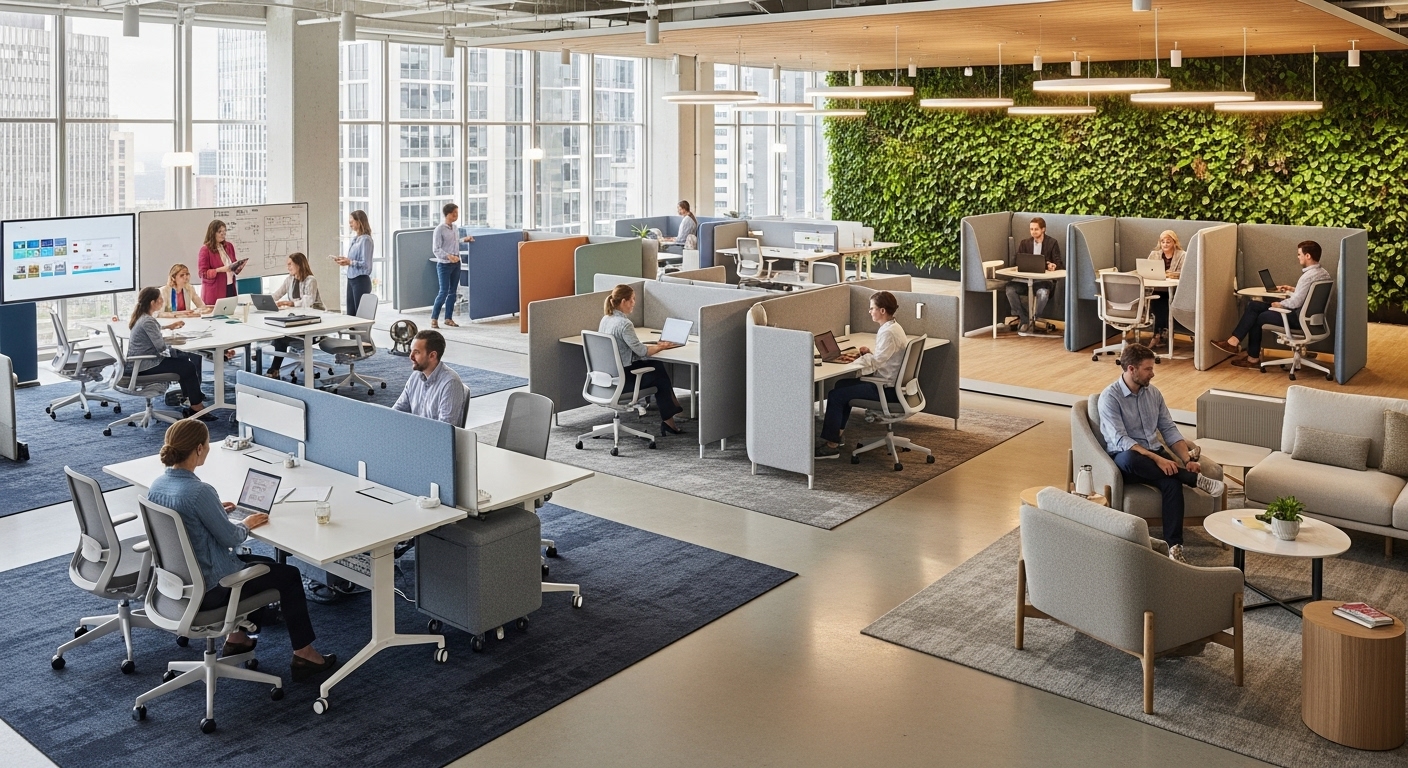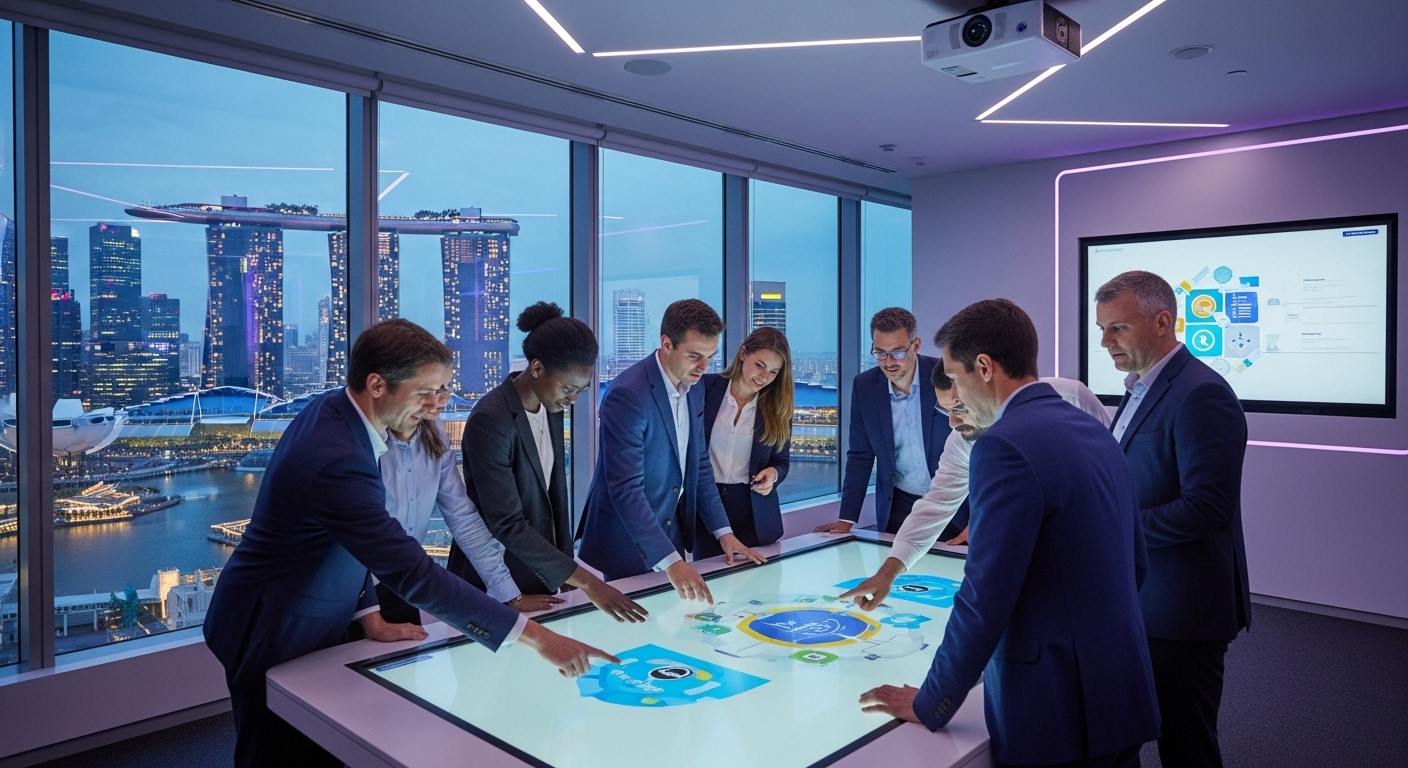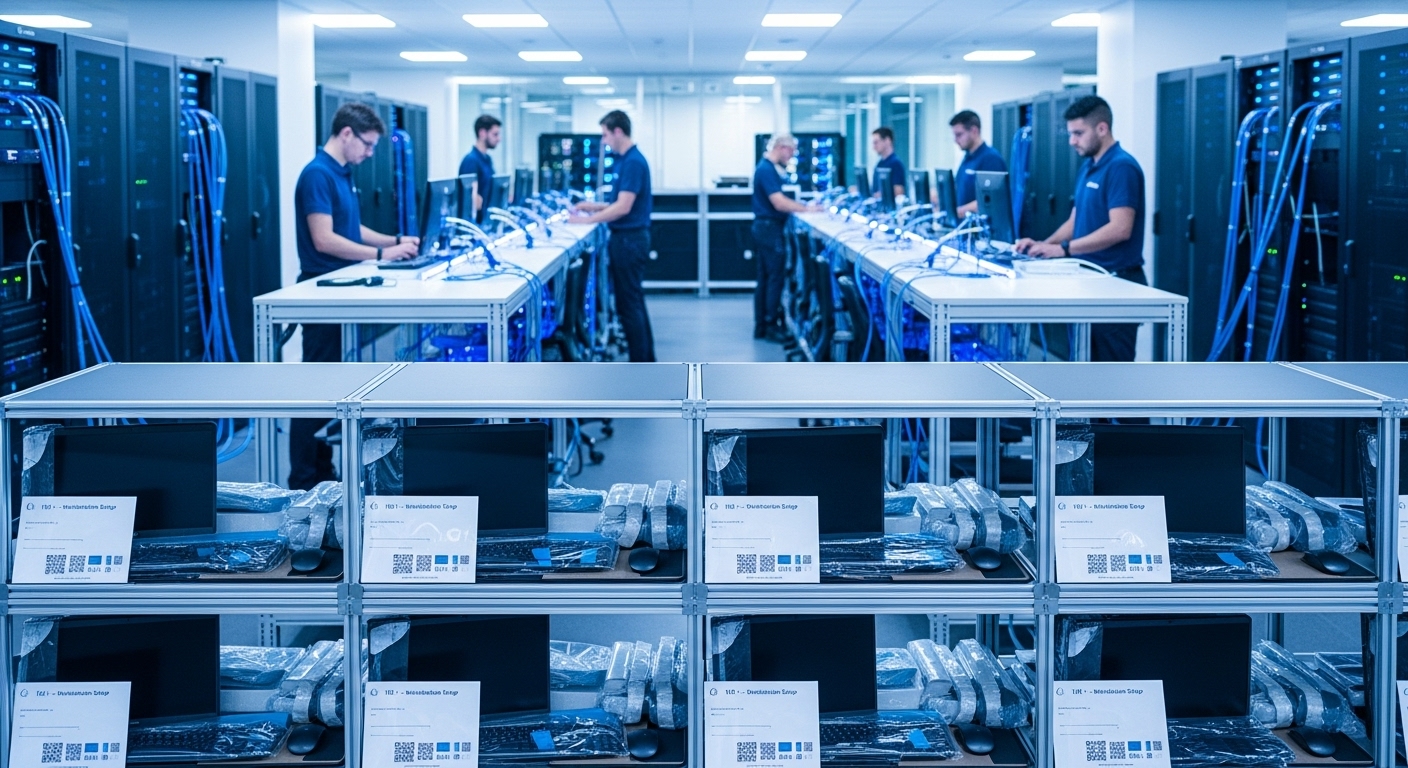In today’s competitive landscape, your office is far more than just a place to work; it’s a powerful communication tool. While most companies stop at placing a logo in the lobby and painting the walls in brand colors, they are missing a profound opportunity. True environmental branding engages every sense to create a holistic, immersive experience—a ‘Sensory Signature’ that is unique to your organization. This multi-dimensional approach moves beyond mere aesthetics to forge a deeper connection with employees and clients alike. In an era where the office must compete with the comfort of home, creating a destination that authentically reflects your brand’s values, culture, and vision is no longer a luxury, but a strategic necessity. This guide will walk you through the essential layers of crafting that signature, from visual and auditory cues to the often-overlooked yet powerful realms of scent and touch, culminating in a space that doesn’t just house your brand, but truly embodies it.
Visual Identity: More Than Just a Color Palette
A brand’s visual identity in a physical space must transcend the basic application of logos and corporate colors. It’s about telling a story through a carefully curated visual language. Think of your walls as canvases for your company’s narrative. This can manifest as large-scale typographic murals displaying your mission statement, custom artwork that reflects your company’s journey, or a gallery of employee-generated content that celebrates the people behind the brand. The strategic use of materials is equally important. The raw, industrial feel of polished concrete and exposed ductwork might communicate innovation and transparency for a tech startup, while the warmth of reclaimed wood and soft textiles could signify sustainability and a human-centric approach for a wellness company. Lighting is another critical, yet often underestimated, visual tool. It does more than just illuminate; it sculpts the space and sets the emotional tone. Dynamic lighting systems can shift from bright and energizing in collaborative zones to softer, warmer light in areas designated for focus and relaxation. By layering these elements—graphics, materiality, and light—you create a rich visual tapestry that communicates your brand’s essence far more effectively than a logo ever could. It’s about building a visual mood that aligns with your core identity.
The Sound of Your Brand: Curating an Acoustic Identity
The acoustic environment of an office is a powerful driver of perception and productivity, yet it is frequently ignored. An office that is too quiet can feel sterile and intimidating, while one with uncontrolled noise is a known cause of stress and distraction. This is where sonic branding, or strategic soundscaping, comes into play. It involves curating the auditory experience to align with your brand’s intended atmosphere. For a high-energy sales floor, this might mean an upbeat, carefully selected playlist played at a low volume to boost morale without hindering conversation. In contrast, a design studio or law firm might benefit from subtle white noise or biophilic sounds, like flowing water or gentle birdsong, which are proven to mask distractions and enhance focus. The reception area, as the first point of sensory contact, is crucial. The sound that greets a visitor—be it a calming ambient track, a dynamic news feed, or even a custom brand anthem—immediately sets the tone for their entire experience. By thoughtfully designing different soundscapes for different zones (e.g., collaborative hubs, quiet pods, social cafes), you not only improve functionality but also add a sophisticated layer to your brand identity. A well-designed acoustic strategy demonstrates a deep consideration for employee well-being and brand consistency, transforming sound from a potential liability into a distinct asset.
Scent and Strategy: The Unseen Element of Brand Atmosphere
Of all our senses, smell is the most powerfully linked to memory and emotion. This direct line to the brain’s limbic system makes scent an incredibly potent, albeit subtle, branding tool. Scent marketing isn’t about dousing your space in an overpowering fragrance; it’s about developing a unique, understated ambient scent that becomes subconsciously associated with your brand. Think of how luxury hotels or high-end retailers use this to create a memorable and consistent experience across all their locations. A tech company aiming to project an image of clean, forward-thinking innovation might choose a subtle scent with notes of citrus and green tea. A financial institution might opt for a sophisticated scent with hints of leather and cedar to evoke trust and stability. The key is authenticity and subtlety. This ‘scent signature’ can be diffused through HVAC systems or standalone, design-conscious diffusers. The olfactory experience also extends to material choices. The natural scent of wooden furniture, leather upholstery, or a living plant wall all contribute to the space’s unique aromatic profile. Even providing a specific brand of high-quality coffee can become a part of your company’s scent identity. By intentionally curating the smell of your workspace, you tap into a primal level of perception, creating a lasting impression that reinforces your brand identity in a way visuals and sounds alone cannot.
Tactile Branding: Engaging Through Texture and Materiality
In a world that is increasingly digital, the physical sensation of touch offers a grounding, tangible connection to a brand. Tactile branding involves the intentional selection of materials and finishes that engage the sense of touch and reinforce your brand’s character. Every surface an employee or client interacts with contributes to this narrative. Consider the difference between a cold, glass-topped table and a warm, solid wood one. The former might suggest sleek modernity, while the latter conveys tradition and craftsmanship. The choice of flooring, from plush carpeting that absorbs sound and feels welcoming to polished concrete that feels industrial and edgy, dramatically alters the perception of a space. This extends to the smallest details. The satisfying weight of a metal door handle, the texture of the fabric on a lounge chair, the smoothness of a stone countertop in the kitchen—all are opportunities to communicate quality and brand values. Even the company stationery left in a conference room, with its specific paper weight and texture, becomes a tactile touchpoint. By creating a diverse and thoughtful tactile landscape, you invite people to physically engage with your brand. This multi-layered approach makes the environment feel more considered, authentic, and human, leaving a lasting impression of quality and attention to detail.
The Digital Layer: Weaving Technology into the Brand Narrative
In a modern workspace, technology is not just a tool for productivity; it’s a dynamic canvas for brand expression. Integrating a digital layer into your physical environment allows you to tell your brand story in a fluid and engaging way. This moves far beyond simply mounting a TV in the lobby. Imagine interactive digital walls that showcase recent projects, display real-time company achievements, or feature profiles of team members. These installations can transform a passive waiting area into an active brand discovery zone. Branded digital signage can be used for wayfinding, but also for reinforcing company values or announcing internal events, ensuring consistent messaging across the entire office. Conference rooms can be equipped with custom-branded user interfaces on their booking panels and video conferencing systems, creating a seamless and professional experience. Even something as simple as a curated network of screens displaying branded content, data visualizations relevant to your industry, or digital art can add a layer of sophistication and dynamism. The key is to ensure the technology feels integrated and purposeful, enhancing the environment rather than cluttering it. When used strategically, technology becomes a living, breathing component of your brand’s physical identity, reflecting a forward-thinking culture and a commitment to innovation.
Bringing It All Together: From Blueprint to Lived Experience
Crafting a multi-sensory brand environment is an exercise in strategic synthesis. Each sensory layer—visual, auditory, olfactory, tactile, and digital—must work in harmony to create a cohesive and authentic experience. A disjointed approach can be jarring; imagine a visually calming space disrupted by loud, aggressive music. The process should begin with a clear definition of what your brand stands for and the specific feelings you want to evoke. This ‘experiential blueprint’ should then guide every decision, from the choice of lighting fixtures to the curated coffee blend. Consistency is paramount. The Sensory Signature established in your headquarters should have recognizable echoes in satellite offices, creating a unified global brand identity. Crucially, this process must be human-centric. Involving employees through surveys or workshops can provide invaluable insights and ensure the final environment resonates with the very culture it aims to reflect. A successful implementation is not a one-time project but an ongoing process of refinement. It’s about observing how people use the space and tweaking elements to better align with their needs and the brand’s evolution. Ultimately, when all sensory elements are aligned, the workspace transcends its physical limitations. It becomes a lived experience, a powerful amplifier of culture, and a strategic asset that constantly communicates your brand’s unique story to everyone who walks through the door.
Conclusion
Branding your space is no longer a matter of superficial decoration; it is a fundamental aspect of corporate strategy and identity creation. By moving beyond the purely visual, you can develop a ‘Sensory Signature’ that transforms your office into a powerful, multi-dimensional brand asset. This holistic approach, which thoughtfully considers sight, sound, scent, and touch, creates an immersive environment that speaks volumes about your company’s values, culture, and attention to detail. Such a space does more than just impress clients; it actively fosters a stronger corporate culture, enhances employee well-being and productivity, and serves as a critical tool for attracting and retaining top talent. In a world of fleeting digital impressions, a well-branded physical environment offers a lasting, tangible connection to your brand’s core. It’s the difference between an office that simply contains your people and a workspace that truly represents them. By investing in a multi-sensory brand experience, you are not just designing an office—you are architecting the very atmosphere of your organization’s future success, making your brand’s story not just seen or heard, but genuinely felt.





